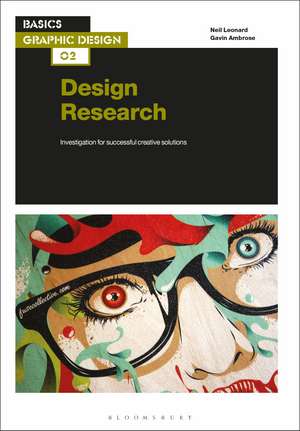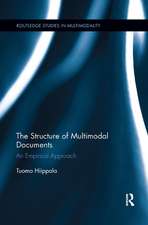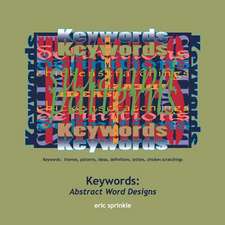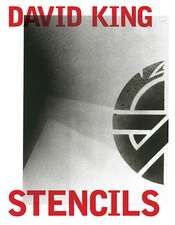Basics Graphic Design 02: Design Research: Investigation for successful creative solutions: Basics Graphic Design
Autor Neil Leonard, Gavin Ambroseen Limba Engleză Paperback – 4 feb 2020
Preț: 167.42 lei
Preț vechi: 216.29 lei
-23% Nou
Puncte Express: 251
Preț estimativ în valută:
32.05€ • 32.88$ • 26.99£
32.05€ • 32.88$ • 26.99£
Carte disponibilă
Livrare economică 05-19 februarie
Preluare comenzi: 021 569.72.76
Specificații
ISBN-13: 9781350167520
ISBN-10: 1350167525
Pagini: 200
Ilustrații: 200 colour illus
Dimensiuni: 160 x 230 mm
Greutate: 0.42 kg
Editura: Bloomsbury Publishing
Colecția Bloomsbury Visual Arts
Seria Basics Graphic Design
Locul publicării:London, United Kingdom
ISBN-10: 1350167525
Pagini: 200
Ilustrații: 200 colour illus
Dimensiuni: 160 x 230 mm
Greutate: 0.42 kg
Editura: Bloomsbury Publishing
Colecția Bloomsbury Visual Arts
Seria Basics Graphic Design
Locul publicării:London, United Kingdom
Caracteristici
Illustrated throughout with research-led design examples, spanning poster design, packaging, typography and signage
Notă biografică
Neil Leonard is Associate Head of the Department of Design Communication at the University of the West of England, UK.Gavin Ambrose is a practicing graphic designer and teaches the Graphic Design BA at the University of Brighton, UK.
Cuprins
ContentsIntroductionChapter 1: The basics of researchWhy research?Getting startedPrimary, secondary and tertiaryKey terminologyStudio interview - Emily HaleActivity - Approaching researchChapter 2: Understanding contextAudience and social contextsDesign contextsTheoretical underpinningStudio interview - Andrew HusseyActivity - ConventionChapter 3: Planning your workThe briefAudienceSources and credibilityRecording and documentingStudio interview - Brian ReaActivity - AudienceChapter 4: Conducting researchAudience researchMarket researchField-based researchProcess-based researchStudio interview - Jane TrustramActivity - Product and customerChapter 5: Using your findingsUnderstanding your findingsResponding to your findingsStudio interview - UnderwareActivity - ClassificationChapter 6: Presenting your findingsPresenting researchCompleting the jobStudio interview - Tanner ChristensenActivity - Presenting statisticsConclusionContactsBibliographyIndexAcknowledgementsWorking with ethics
Recenzii
In a climate where a certain six letter word search engine is fast becoming the one-stop hit for every research need, this book shows a breadth of techniques, opportunities, methodologies and suggestions that will open up your creative thinking in a way that no algorithm ever could. You don't need to hit a search button, you don't need to feel lucky. You need to read this book.
Design Research is an easy to follow, clearly written, student friendly guide on how to conduct research for practical projects. Although academic in content, the fact that there are direct links to professional practice throughout, gives the book a 'real world' authority. The inclusion of case studies, interviews and supporting imagery purposefully link the relevance of the content to the practice of being a designer. Carefully building in complexity as the book progresses, the importance, practice, methods, and key terminology of research are introduced in a measured way, ensuring the reader is not overwhelmed - students who do not value research as part of the design process will not only be engaged throughout, but they will be in no doubt of its importance after reading this book. In fact, Design Research doesn't just take the reader through a step-by-step guide to the research process, it also highlights plenty of everyday good practice along the way. In writing this book, Leonard and Ambrose have gone a long way in validating to students what they are taught on a day-to-day basis in lecture theatres and workshops - Design Research should therefore be on any contextual studies reading list as a result.
A key part of the design process and often overlooked, a superb book dedicated to design research - An inspiring read!
The book Basic Design 02: layout,is easy to understand and lots of photos and illustrations to explain the text. Great resource. Each chapter is flawlessly comprehensive and the pictures, diagrams and photographs make this book a must for any designer who is looking to fully understand the essential skills required for making a good layout. As the basic design 01:format it is a very good book to use as supporting material for my classes.
Design Research is an easy to follow, clearly written, student friendly guide on how to conduct research for practical projects. Although academic in content, the fact that there are direct links to professional practice throughout, gives the book a 'real world' authority. The inclusion of case studies, interviews and supporting imagery purposefully link the relevance of the content to the practice of being a designer. Carefully building in complexity as the book progresses, the importance, practice, methods, and key terminology of research are introduced in a measured way, ensuring the reader is not overwhelmed - students who do not value research as part of the design process will not only be engaged throughout, but they will be in no doubt of its importance after reading this book. In fact, Design Research doesn't just take the reader through a step-by-step guide to the research process, it also highlights plenty of everyday good practice along the way. In writing this book, Leonard and Ambrose have gone a long way in validating to students what they are taught on a day-to-day basis in lecture theatres and workshops - Design Research should therefore be on any contextual studies reading list as a result.
A key part of the design process and often overlooked, a superb book dedicated to design research - An inspiring read!
The book Basic Design 02: layout,is easy to understand and lots of photos and illustrations to explain the text. Great resource. Each chapter is flawlessly comprehensive and the pictures, diagrams and photographs make this book a must for any designer who is looking to fully understand the essential skills required for making a good layout. As the basic design 01:format it is a very good book to use as supporting material for my classes.









